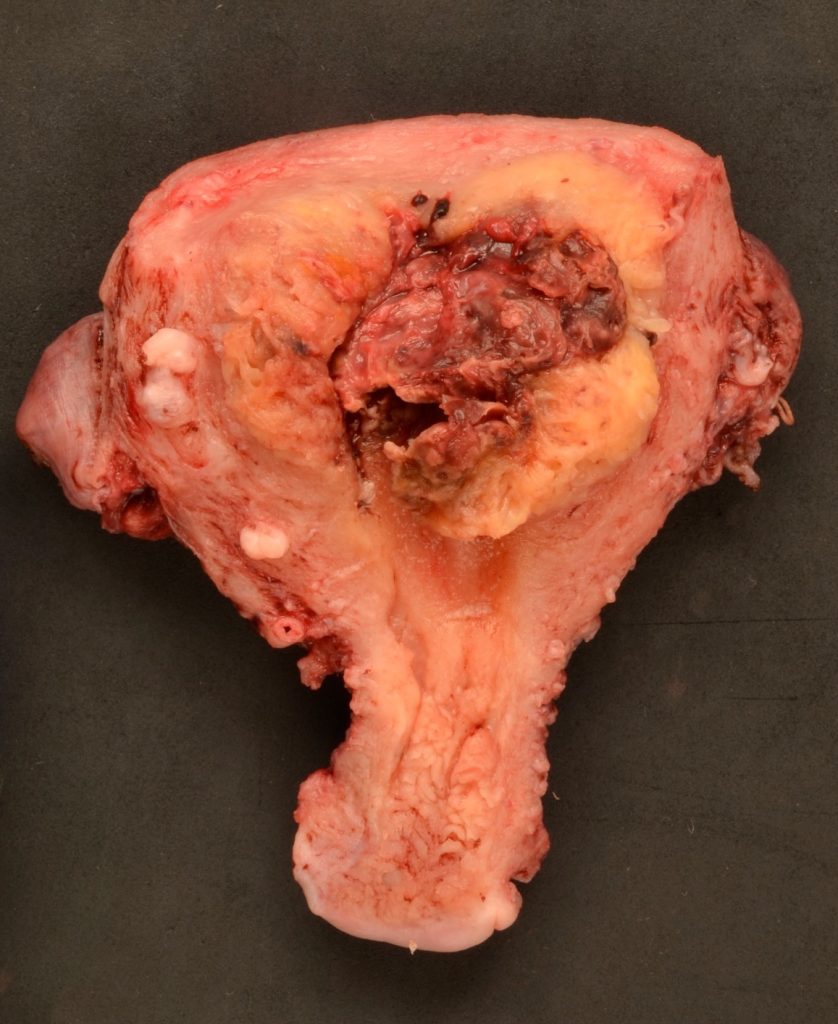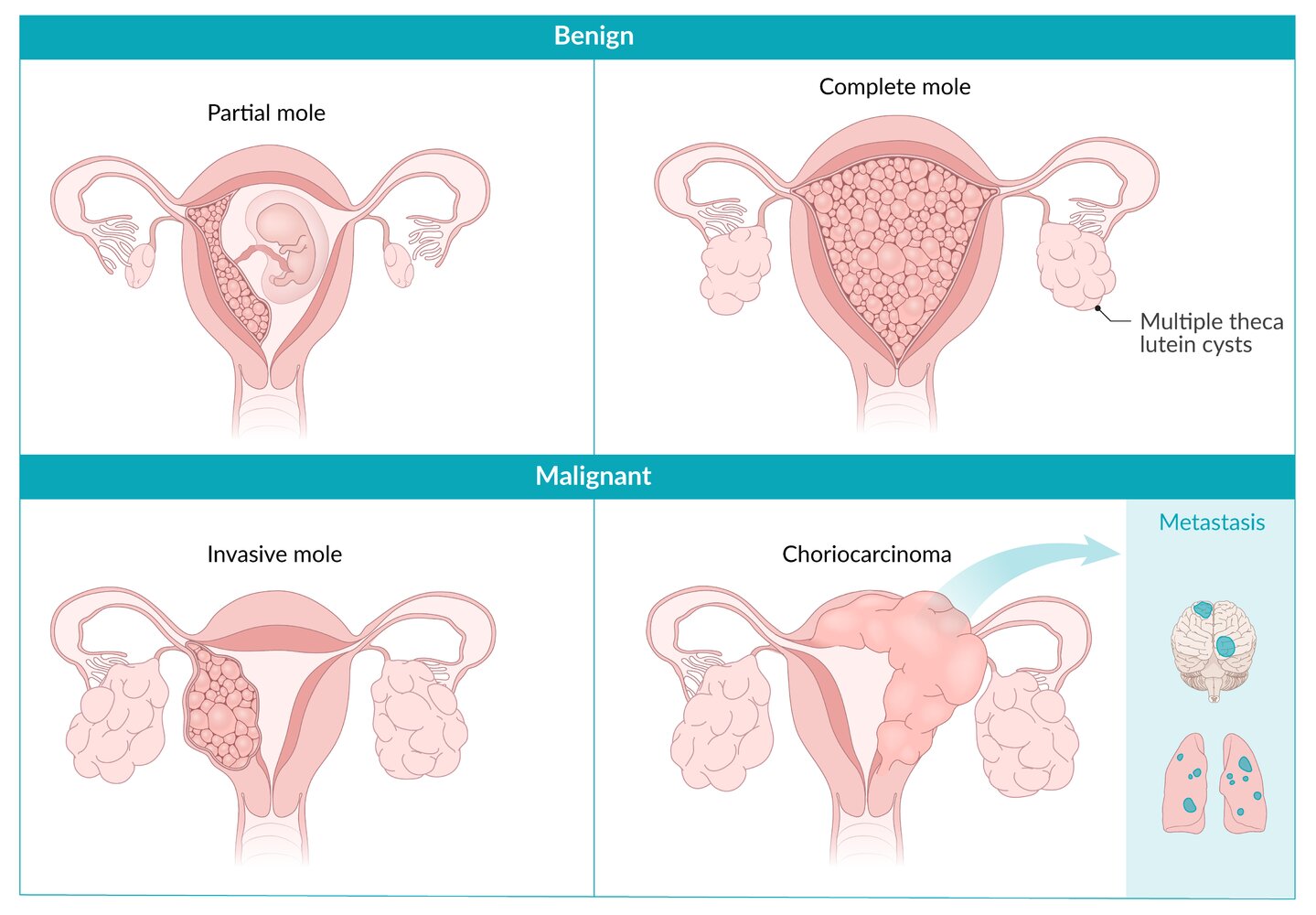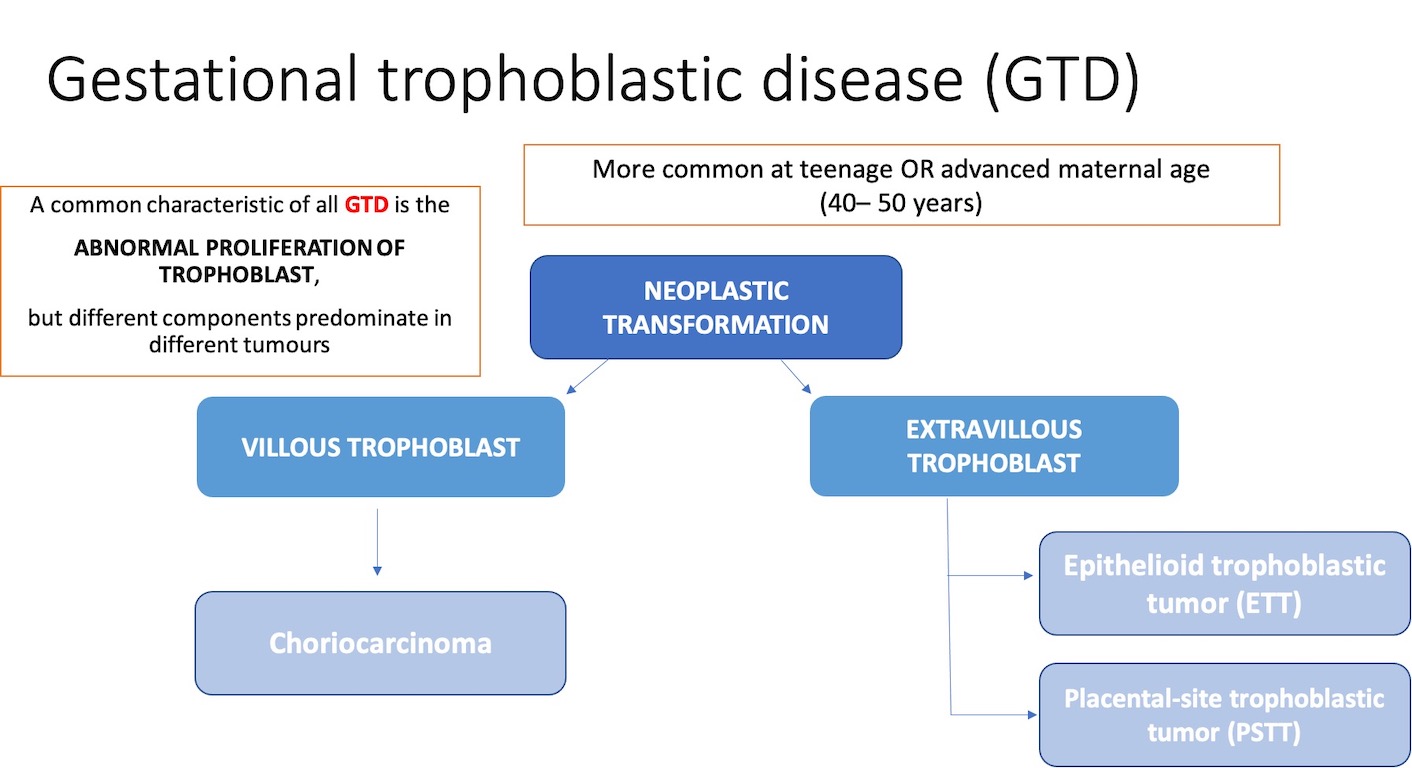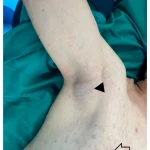
Placental site trophoblastic tumours (PSTTs) and epithelioid trophoblastic tumours (ETTs) are cancers that happen after pregnancy. They are extremely rare and are slow growing.
What are placental site trophoblastic tumours and epithelioid trophoblastic tumours?
These tumours are part of a group of conditions called gestational trophoblastic disease (GTD). GTD is the name for abnormal cells or tumours that grow from the tissue that forms in the womb during pregnancy. Less than 1 in 100 (less than 1%) of GTDs are placental site trophoblastic tumours or epithelioid trophoblastic tumours.
In PSTT and ETT the tumour develops from the cells that grow to form the placenta. The cells are called trophoblast cells. They can happen after any type of pregnancy, including molar pregnancy, miscarriage, abortion, or a full term pregnancy. They can occur several months, or even years, afterwards.
These tumours develop in the area where the placenta joined the lining of the womb (uterus). They are generally slow growing, but can spread beyond the womb.
Atypical placental site nodule (APSN)
Very rarely, tiny amounts of tissue from the placenta stay in the womb after pregnancy. This can grow abnormally. This is called an atypical placental site nodule (APSN).
APSN is not cancerous, but about 15 out of 100 (15%) will develop into PSTT or ETT.
If you are diagnosed with APSN you are monitored by one of the specialist GTD centres.
Symptoms of PSTT and ETT
The main symptom of PSTT and ETT is irregular bleeding from the vagina. In some women this follows a loss of periods (amenorrhoea).
Diagnosing PSTT and ETT
If you have irregular vaginal bleeding or your periods have stopped your doctor will refer you for tests. You might have the following tests.
Blood test
Women with PSTT and ETT might have raised levels of a hormone called human chorionic gonadotrophin (hCG) in their blood. This hormone may be produced by the PSTT/ETT cells.
Ultrasound
An ultrasound scan might show abnormal areas in the lining of the womb. A special type of scan called a Doppler ultrasound uses colour to show up body structures. The Doppler scan can show that there are more blood vessels than usual in the area of the tumour.
CT or MRI scan
If you have APSN, PSTT or ETT, or your doctors think you have it, you might need to have a CT or MRI scan. These are used to help with diagnosis.
Surgery to sample the womb lining
You have an operation called a dilation and curettage (D and C) under general anaesthetic in hospital. Once you are asleep, the surgeon opens up (dilates) the entrance to the womb (cervix) and takes a sample of any abnormal areas. The doctor uses a small instrument called a curette to scrape the lining of the womb. They send the tissue they have removed to the laboratory. Under the microscope a pathologist can tell if the cells are an APSN, PSTT or ETT.
Treatment for PSTT and ETT
Surgery
If the tumour is only in the womb the main treatment is usually surgery. Most women have their womb removed (a hysterectomy). After surgery the womb is sent to the laboratory for checking. This is to:
- confirm the diagnosis of PSTT or ETT
- remove the cancer
- do tests to decide if you need any more treatment
Some women might have surgery to remove spread elsewhere in the body. For example, an operation to remove an area of spread to the lungs.
Chemotherapy and drug treatments
Sometimes you might have chemotherapy before or after a hysterectomy. This happens if:
- the PSTT or ETT has spread to another part of your body, such as the area around the womb or the lungs
- the PSTT or ETT is diagnosed over 4 years after the end of your pregnancy
Chemotherapy treatment usually involves a combination of drugs. The drugs used include:
- etoposide, cisplatin, methotrexate and actinomycin-D (EP-EMA)
- paclitaxel, cisplatin (TP)
- paclitaxel, etoposide (TE)
Some women might have treatment with an immunotherapy drug called pembrolizumab. Immunotherapy drugs help your immune system to attack cancer.
Your clinical team will discuss with you what treatment you need and how long your treatment will last.

Follow up after treatment
After treatment your specialist will monitor you closely. You have tests to check how well the treatment has worked and to monitor your progress. These can include:
- blood and urine tests
- ultrasound scans
- MRI scans
- CT scans
Your specialist team will continue to monitor you for life. They can explain in detail what your follow up will involve.




